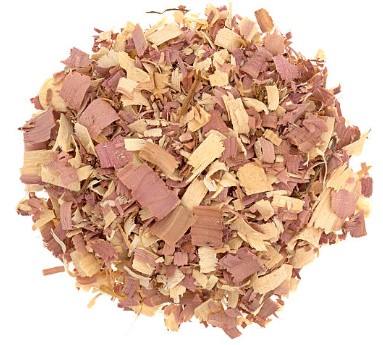

Dogs with a cedar bedding allergy may suffer from itchy skin, constant scratching, red and irritated patches of skin, and hair loss. They may also experience sneezing, coughing, and increased sensitivity to the sun. The body’s reaction to the allergy can cause a weakened immune system, which can lead to secondary infections.
Cedar bedding allergy in dogs is caused by exposure to particles in the air from cedar-based wood products which can enter into a dog’s respiratory system. Additionally, cedar oil, a natural insect and bug repellent, may cause an allergic reaction through contact. Finally, inhaling the scent of cedar can cause an allergic response in some dogs.
The diagnosis of a cedar bedding allergy in dogs is typically made based on a thorough investigation of the dog’s medical history, physical examination of the affected skin, and ruling out other potential causes of the symptoms. A skin scraping or blood test may also be conducted to confirm the diagnosis.
A cedar bedding allergy is potentially a serious allergy if left untreated. While allergies such as these do not usually result in death, the mortality rate can increase if secondary infections go untreated. Without medical attention, some cases of secondary infections can be severe and may even lead to death.
The treatment of a cedar bedding allergy in dogs typically involves avoiding exposure to the allergen by switching to hypoallergenic bedding. Other treatments may include medicated shampoos, anti-inflammatory medications, and topical creams. If the allergy is severe, the vet may recommend an antihistamine or corticosteroid to reduce itching, inflammation, and other symptoms. In some cases, allergy shots may be recommended to desensitize the dog to the allergen.
To prevent a cedar bedding allergy in dogs, pet owners should consider switching to a dust-free, hypoallergenic bedding such as cotton or wool bedding. Additionally, vacuuming regularly and washing bedding frequently can help reduce allergens in the home. Pet owners should also maintain a well-groomed coat, and speak to your veterinarian about safe and effective medication or topical treatments, such as Benadryl which can provide relief for your pup while you attempt to remedy the underlying cause of the allergy.
The cedar bedding allergy in dogs is not contagious and is not known to affect humans. However, if humans have prolonged contact with sick or irritated dogs, they may develop an allergic reaction to the same type of cedar bedding used by the dog.
Some home remedies that may be useful include regularly cleaning the pet’s bedding to remove dust and dander, brushing the dog frequently to reduce shedding, and avoiding heavy-scented shampoos and grooming products. Additionally, some holistic remedies such as Omega 3 fatty acids, Vitamin E, and coconut oil may help with managing skin irritation and red patches.
While these dog allergy remedies may help with managing symptoms, it is best to consult with a veterinarian to accurately diagnose any allergies and create a personalized treatment plan for your pet.
Certain dog breeds are more likely to be affected by a cedar bedding allergy. The most common breeds include Chihuahuas, Boston Terriers, Greyhounds, and Dalmatians. These breeds are particularly sensitive to dust particles and cedar oils, which are often found in cedar bedding. Other breeds, such as Labradors, Schnauzers, and Beagles, may also be vulnerable to this type of allergy. Allergies to cedar bedding can cause skin irritation, respiratory issues, and even hair loss. If your dog is showing any of these symptoms, it is best to avoid cedar bedding and seek veterinarian advice.
Have you ever dealt with this type of allergy in your dog? If so, how did your pet respond? How did you feel throughout the process? What tools and strategies did you use to help manage the allergy?
Regardless of whether you have gone through this process or not, hopefully knowing that you’re not alone can be a comfort. Managing allergies, especially those that come from an environment, can be quite overwhelming but there’s a support system in place to help. With dedication, patience, good communication, and the right resources, you can ensure your canine remains healthy and happy. Wishing you and your pooch all the best!